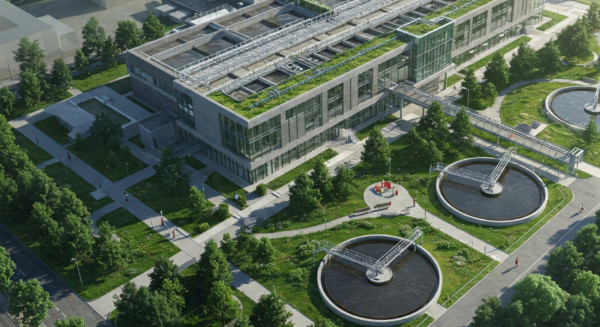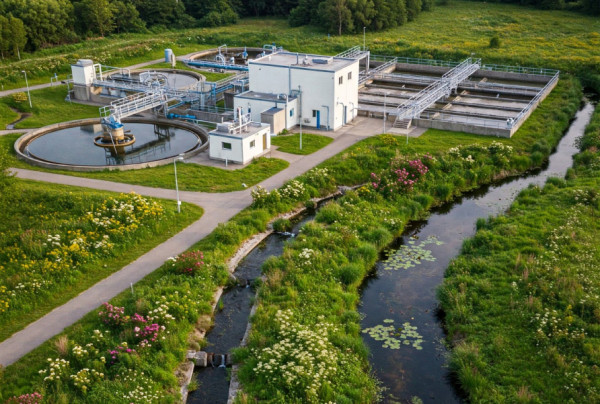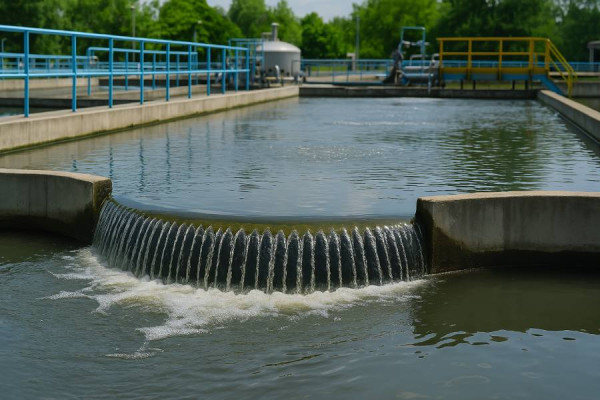News & Blogs
Transforming Kathmandu: The Journey of Wastewater Management

Kathmandu, Nepal’s vibrant capital, stands as a testament to the harmonious blend of ancient culture and rapid modernization. Yet, beneath its cultural brilliance lies a pressing challenge: managing wastewater effectively. With population growth outpacing infrastructure development, Kathmandu faces severe environmental and public health risks due to inadequate wastewater management. However, recent initiatives offer a beacon of hope, striving to create a cleaner, healthier urban environment through sustainable solutions.
Problems Caused by Poor Wastewater Management
1. Water Pollution and Environmental Degradation
Kathmandu’s rivers, particularly the Bagmati, have borne the brunt of untreated sewage disposal. Once pristine, these rivers now struggle under the weight of pollution, causing the collapse of aquatic ecosystems and diminishing biodiversity.
2. Health Hazards and Waterborne Diseases
Contaminated water sources have led to an alarming rise in waterborne diseases such as cholera, dysentery, and hepatitis. Marginalized communities, with limited access to clean water and sanitation, are disproportionately affected, facing higher health risks and mortality rates.
3. Reduced Quality of Life
The mismanagement of wastewater manifests in unsanitary living conditions, pervasive foul odors, and a decline in aesthetic appeal. Communities near open sewage face depreciating property values, diminished tourism prospects, and deteriorating public morale.
4. Economic Burden
Poor wastewater management imposes significant economic costs, including healthcare expenses for disease outbreaks, lost agricultural productivity due to polluted water, and the financial strain of rehabilitating outdated infrastructure.
5. Flooding and Infrastructure Damage
Kathmandu’s aging drainage systems are often overwhelmed, particularly during monsoon seasons. Clogged drains lead to urban flooding, which damages infrastructure, disrupts daily life, and hampers economic activity.
Key Objectives of the Wastewater Management Project
1. Upgrading and Expanding Infrastructure
- Modern Sewage Treatment Plants (STPs): The construction of state-of-the-art STPs ensures the efficient treatment of increasing volumes of wastewater.
- Expanded Sewer Networks: New pipelines in underserved areas enhance the collection and treatment capacity, minimizing untreated discharge.
2. Pollution Control
- Eliminating Untreated Discharges: Efforts are underway to prevent raw sewage from entering rivers, protecting water quality.
- Advanced Treatment Technologies: Innovative methods like biological treatment and membrane filtration meet stringent environmental standards.
3. Public Awareness and Community Involvement
- Educational Campaigns: Public outreach promotes awareness of proper wastewater disposal and its environmental impact.
- Community Engagement: Local residents are encouraged to actively participate in maintaining clean waterways and reporting pollution incidents.
4. Sustainable Solutions
- Reuse and Recycling: Treated wastewater is repurposed for agriculture and industrial use, reducing freshwater demand.
- Green Infrastructure: Constructed wetlands and bioengineering techniques provide natural filtration, creating eco-friendly urban green spaces.
Innovative Solutions and Technologies
1. Advanced Wastewater Treatment Plants (STPs):
These facilities leverage cutting-edge technology to purify wastewater efficiently before release, ensuring minimal environmental impact.
2. Decentralized Wastewater Systems:
Small-scale, localized treatment units offer effective solutions in densely populated areas, alleviating pressure on centralized systems.
3. Eco-Friendly Technologies:
Constructed wetlands and bioengineering innovations enhance natural water purification, contributing to urban beautification and ecosystem restoration.
Kathmandu’s journey toward effective wastewater management marks a pivotal step in achieving sustainable urban living. Through modern infrastructure, innovative technologies, and community-driven initiatives, the city is reclaiming its rivers and revitalizing its environment. As these efforts continue, Kathmandu serves as a model for other urban centers, demonstrating that sustainable growth and environmental stewardship can coexist, paving the way for a healthier, more resilient future.



